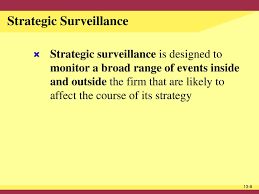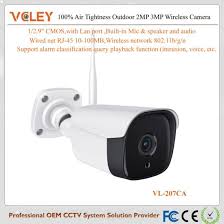Strategic surveillance plays a crucial role in modern security and intelligence operations, providing valuable insights and information for decision-making at various levels. This sophisticated form of surveillance involves the systematic monitoring and analysis of specific targets, areas, or activities to gather intelligence and assess potential risks.
One key aspect of strategic surveillance is its proactive nature, focusing on identifying and anticipating threats before they materialize. By employing advanced technologies such as drones, satellites, CCTV cameras, and data analytics tools, security agencies can monitor critical infrastructure, borders, public spaces, and other sensitive locations to detect suspicious activities or patterns.
Moreover, strategic surveillance is not limited to physical assets but also extends to cyberspace. With the increasing reliance on digital platforms for communication and transactions, monitoring online activities has become essential for detecting cyber threats, frauds, and information breaches.
In addition to enhancing security measures, strategic surveillance plays a vital role in national defense and counterterrorism efforts. By gathering intelligence on potential adversaries’ capabilities and intentions, security agencies can preemptively address emerging threats and safeguard national interests.
Furthermore, strategic surveillance is instrumental in supporting law enforcement agencies in investigating crimes, tracking suspects, and preventing illegal activities. Through the use of sophisticated surveillance technologies and data analysis techniques, authorities can enhance their operational efficiency and response times.
However, it is essential to strike a balance between the benefits of strategic surveillance and individual privacy rights. As these surveillance methods become more advanced and pervasive, concerns about data privacy, civil liberties, and government overreach have emerged. Therefore, implementing robust legal frameworks and oversight mechanisms is crucial to ensure that surveillance activities are conducted within the bounds of law and respect fundamental rights.
In conclusion, strategic surveillance serves as a critical tool for enhancing security measures, gathering intelligence insights, and combating emerging threats. By leveraging advanced technologies and analytical capabilities responsibly, security agencies can effectively mitigate risks while upholding ethical standards and legal principles.
8 Essential Tips for Effective and Ethical Strategic Surveillance
- Establish clear objectives for your surveillance activities.
- Regularly assess and reassess the threats and risks you are monitoring.
- Ensure that your surveillance methods comply with legal and ethical standards.
- Utilize a combination of human intelligence and technology for effective surveillance.
- Maintain confidentiality and secure storage of surveillance data.
- Train personnel involved in surveillance on best practices and protocols.
- Stay updated on advancements in surveillance technology to enhance effectiveness.
- Collaborate with relevant authorities or experts to improve strategic surveillance outcomes.
Establish clear objectives for your surveillance activities.
Establishing clear objectives for your surveillance activities is essential to ensure their effectiveness and relevance. By defining specific goals and outcomes upfront, you can focus your resources and efforts on gathering the most relevant information to meet your strategic needs. Clear objectives help in guiding the selection of surveillance methods, target areas, and data analysis techniques, enabling you to make informed decisions based on actionable intelligence. Moreover, having well-defined objectives allows you to evaluate the success of your surveillance activities and adjust your strategies accordingly to achieve desired results.
Regularly assess and reassess the threats and risks you are monitoring.
Regularly assessing and reassessing the threats and risks you are monitoring is a fundamental aspect of effective strategic surveillance. By continuously evaluating the evolving landscape of potential threats, security professionals can adapt their surveillance strategies to address new challenges and vulnerabilities. This proactive approach ensures that security measures remain relevant and responsive to emerging risks, enabling timely interventions and mitigating potential security breaches. Through regular assessments, organizations can enhance their situational awareness, identify gaps in their surveillance capabilities, and prioritize resources effectively to safeguard critical assets and operations.
Ensure that your surveillance methods comply with legal and ethical standards.
When implementing strategic surveillance measures, it is paramount to ensure that your surveillance methods align with established legal and ethical standards. Adhering to these guidelines not only helps in safeguarding individual rights and privacy but also prevents potential legal repercussions. By conducting surveillance activities within the boundaries of the law and ethical principles, organizations can maintain transparency, accountability, and trust with stakeholders. Moreover, compliance with legal and ethical standards reinforces the credibility and effectiveness of surveillance efforts, fostering a responsible and sustainable approach to security and intelligence operations.
Utilize a combination of human intelligence and technology for effective surveillance.
To maximize the effectiveness of strategic surveillance, it is essential to leverage a combination of human intelligence and technology. While advanced surveillance technologies provide valuable data and insights, human intelligence adds a critical element of analysis, interpretation, and decision-making based on contextual understanding and experience. By integrating the strengths of both human operators and technological tools, security agencies can enhance their surveillance capabilities, improve threat detection, and respond promptly to evolving security challenges. This synergy between human intelligence and technology not only increases the efficiency of surveillance operations but also ensures a more comprehensive and nuanced approach to safeguarding critical assets and national interests.
Maintain confidentiality and secure storage of surveillance data.
One crucial tip for effective strategic surveillance is to maintain confidentiality and ensure secure storage of surveillance data. Protecting the sensitive information collected through surveillance operations is essential to prevent unauthorized access, data breaches, or misuse of intelligence. By implementing robust encryption protocols, access controls, and secure storage facilities, security agencies can safeguard the integrity and confidentiality of surveillance data, maintaining trust and compliance with privacy regulations.
Train personnel involved in surveillance on best practices and protocols.
Training personnel involved in surveillance on best practices and protocols is essential to ensure the effectiveness and integrity of strategic surveillance operations. By providing comprehensive training, security agencies can equip their staff with the necessary skills and knowledge to conduct surveillance ethically, professionally, and in compliance with legal regulations. Training programs should cover topics such as data collection methods, evidence handling procedures, privacy protection guidelines, and situational awareness techniques. Moreover, ongoing training and refresher courses are crucial to keep personnel updated on the latest technologies, trends, and threats in the field of strategic surveillance. By investing in the continuous professional development of their workforce, security agencies can enhance operational efficiency, maintain high standards of conduct, and uphold public trust in their surveillance activities.
Stay updated on advancements in surveillance technology to enhance effectiveness.
Staying updated on advancements in surveillance technology is crucial for enhancing the effectiveness of strategic surveillance operations. As technology continues to evolve rapidly, security agencies must keep pace with the latest innovations to improve their monitoring capabilities, data analysis techniques, and overall situational awareness. By incorporating cutting-edge surveillance tools such as AI-powered analytics, facial recognition systems, and real-time monitoring solutions, organizations can enhance their ability to detect threats proactively and respond swiftly to emerging security challenges. Continuous learning and adaptation to technological advancements are key factors in maintaining a competitive edge in the field of strategic surveillance.
Collaborate with relevant authorities or experts to improve strategic surveillance outcomes.
Collaborating with relevant authorities or experts is a valuable tip to enhance strategic surveillance outcomes. By partnering with professionals who possess specialized knowledge and expertise in surveillance techniques, data analysis, and threat assessment, security agencies can gain valuable insights and guidance to optimize their surveillance strategies. This collaborative approach not only fosters information sharing and coordination but also facilitates the adoption of best practices and innovative solutions to address evolving security challenges effectively. Leveraging the collective experience and resources of diverse stakeholders can significantly improve the effectiveness and efficiency of strategic surveillance operations, ultimately enhancing overall security measures and risk mitigation efforts.




